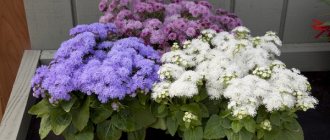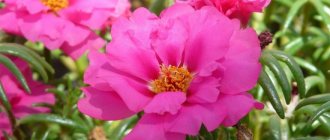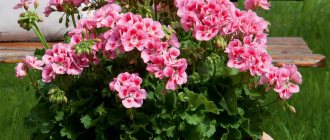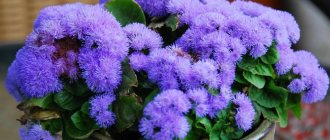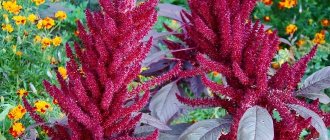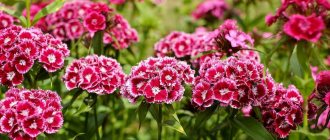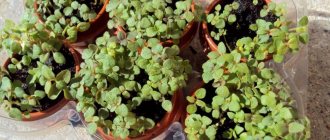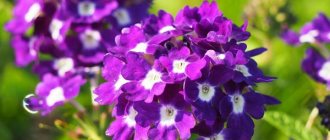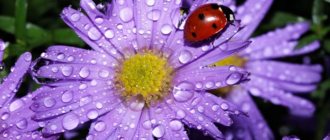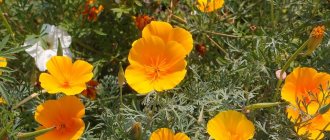Verbena is a uniquely beautiful plant that will ideally fit into the landscape composition of a garden or local area. In Russia, the most commonly used annual varieties are those that are relatively unpretentious and easily adapt to climate conditions.
The flower is usually planted by seedlings. This is how you get healthy, beautiful plants.
Planting verbena seeds for seedlings has its own characteristics. Which? This is what this article is about.
When to plant verbena seedlings in 2022
Gardeners around the world advise planting seedlings according to the lunar calendar. It is believed that this natural satellite of the Earth has a strong influence on young plants, like the ebb and flow of tides.
According to this rule, a lunar calendar is drawn up, which marks the most favorable days for soda work and the unlucky ones for each month
According to this rule, a lunar calendar is drawn up, which marks the most favorable days for soda work and the unlucky ones for each month.
For verbena, the following favorable days for planting seedlings are distinguished:
- February: 23, 24, 25, 26, 27, 28, 29;
- March: 1, 2, 3, 4, 5, 6, 7, 8, 25, 26, 27, 28, 29, 30, 31;
- April: 1, 2, 3, 4, 5, 6, 7, 24, 25, 26, 27, 28, 29, 30.
The following days are suggested for transplanting to open ground, to beds in the garden or a house plot:
- May: 1, 2, 3, 4, 5, 6, 23, 24, 25, 26, 27, 28, 29, 30, 31;
- June: 1, 2, 3, 4.
In turn, there are also unfavorable days on which it is recommended to refrain from any gardening work:
- February: 9, 10, 11, 12, 13, 14, 15, 16, 17, 18, 19, 20, 21, 22, 23;
- March: 9, 10, 11, 12, 13, 14, 15, 16, 17, 18, 19, 20, 21, 22, 23, 24;
- April: 8, 9, 10, 11, 12, 13, 14, 15, 16, 17, 18, 19, 20, 21, 22, 23.
You should also refrain from transplanting to open ground on May 8 and 22, as well as June 5. On all other days you can work on seedlings and caring for them.
Growing from seeds
To get a flowering plant in summer, seeds are sown for seedlings no later than February. To do this, use small containers filled with loose substrate. You can buy ready-made universal soil or mix sand with peat and garden soil. The seeds are evenly placed on the surface and are not covered with soil on top. Instead, the boxes are covered with glass or plastic film. Sprouts appear within 13-15 days.
When the first pair of true leaves appears, the seedlings can be planted in separate cups or bowls.
Working with seedlings depending on the region
The lunar calendar is not the only criterion on which the planting of seedlings depends. Another important condition is the climatic conditions of the region.
For example, in central Russia, seeds begin to be planted from the beginning of March or from the end of February. Winter in such regions gives way to warm spring, and the ground quickly recedes after frost.
But in the northern regions there is no need to rush. Therefore, in Siberia and the Urals, seedlings begin to be planted in mid-to-late April, and verbena is transplanted into the garden closer to mid-summer.
Usually weather forecasters make weather forecasts for winter and spring. It is different from year to year, so you always need to focus on specific conditions. Seedlings need sufficient heat and light
If spring in the region turns out to be cloudy, cloudy, or rainy, then it must be additionally illuminated with ultraviolet lamps.
There is no need to rush in this matter, especially when transplanting to open ground. It is necessary to wait for relatively stable weather, when there are no night frosts, and warmth and sun prevail during the day.
Verbena character
Verbena is quite unpretentious. It is resistant to heat and drought. It is not afraid of slight autumn and spring frosts (down to -3°C), so it can delight with its flowering from spring to October (even longer in the southern regions).
Also, verbena does not have any special requirements for soil quality. The only condition: it must allow moisture to pass through well and prevent stagnation of water and subsequent waterlogging. Clayey, heavy soil is not suitable; it slows down root growth and causes root rot. In southern regions, perennial varieties of verbena often disappear when planted in soil that becomes soggy after heavy winter snow or spring rain. Good drainage can compensate for this problem.
Another advantage of verbena is its long flowering, which does not subside in the summer heat. And a very wide range of colors.
Pros and cons of the method
Typically, verbena, both annual and annual, is planted through seedlings. It has a weak point - a low level of frost resistance, so in open ground the plant may not germinate or severe frosts will damage the root system and prevent further development.
The method of growing seedlings has several significant advantages:
- Seedlings allow you to get healthier, more beautiful plants that can take root in open ground.
- Easy to grow and care for. The gardener does not require any special skills or experience.
- The ability to create a unique composition from several varieties. Experienced gardeners can even create different designs or patterns.
The only disadvantages of the seedling method include the additional costs of purchasing cassettes, soil, and various mineral mixtures for bait.
Features of reproduction
Several methods are used to propagate hybrid verbena:
- cuttings - used for hybrids that do not form seeds;
- dividing a bush of an adult plant;
- seed, with germination of seedlings from hybrid seeds.
To grow hybrid verbena seedlings, you should choose selected plant seeds from trusted producers
Suitable varieties
To date, over 100 varieties of verbena have been developed. But only a few are grown in Russia, since not all of those available can adapt to changing climate conditions. Let's look at a few of the most suitable ones:
| Variety | Description |
| Buenos Aires | It belongs to the giant varieties, the plants of which can reach a height of up to one meter. This verbena has a distinctive feature: large inflorescences of a rich pink-violet color. Baskets of this variety consist of many small flowers; they fit perfectly into any flower arrangement. |
| Tough | It has thin creeping stems. It comes in a wide variety of shades, usually soft blue or deep blue. The main feature of this variety of verbena is its delicate and pleasant aroma, which is often used to create perfume compositions. |
| Canadian | Refers to dwarf varieties, the plants of which do not exceed 20 centimeters in height. It is distinguished by delicate, soft shades of buds: pink, lilac, white, sky blue. The main advantage of the variety is its abundant flowering, which lasts throughout the summer. |
| Hybrid | Most often found in Russian gardens. This species was specially bred for local climatic conditions. The height of such verbena can be from 20 to 50 centimeters. It is distinguished by abundant, lush flowering and a variety of colors: from delicate cream shades to rich pink. |
| Straight | Also refers to giant varieties, the height of which can reach a meter. This verbena is grown mainly in the central regions. Its main difference is its bright, rich green, jagged foliage. But the flowering of this variety is very short. |
You should always focus on local climate conditions, soil conditions, abundance or lack of moisture.
Each seed package contains recommendations for a specific variety that you need to pay attention to.
Verbena hybrid: cultivation, propagation
The mysterious and romantic name of this flower excites the imagination for good reason! Verbena has been known since ancient times; many mystical properties have been attributed to it.
For example, the ancient Celts used it to reconcile enemies, made amulets from evil spirits from the grass, and brewed a drink that evoked love.
In Christianity, this flower is considered sacred. There is a legend that for the first time verbena grew in those places where the blood of the crucified Christ fell.
Nowadays, the variety of species and varieties allows the use of verbena in the design of a garden of any style.
Hybrid verbena (Verbena x hybrida) belongs to the verbena family (Verbenaceae). This is a perennial plant obtained by crossing several species of verbena. In cultivation, it is usually grown as an annual plant.
The plant is a compact branched bush. Stems are 15 to 60 cm high, tetrahedral. Adventitious roots form on the shoots where they touch the ground. The root system of the plant is fibrous, branched, located in the top layer of soil up to 20 cm thick.
Verbena leaves are opposite, elongated. The lower leaves are heart-shaped at the base, the upper ones are sessile. All green parts of the plant are covered with hard gray hairs.
This species includes various forms of plants - both ground cover and hanging, both tall and dwarf. The richness of colors defies description and can even include colors that are uncharacteristic of verbena, such as peach and orange.
The inflorescence of hybrid verbena is in the form of an umbrella-shaped spike, with up to 30 medium-sized flowers with a pleasant aroma. The colors of the flowers are very diverse - white, blue, purple, red, pink with various shades, plain or with a light spot in the center.
Long and abundant flowering and striking coloring of flowers make verbena a very valuable crop for decorating a garden plot.
In addition to their elegant appearance, inflorescence umbrellas have a fragrant floral aroma that intensifies towards sunset. This feature distinguishes all varieties and forms of hybrid verbena.
Planting Verbena seeds step by step
Planting verbena seedlings has its own distinctive characteristics. Let's take a closer look at the main points:
- Seed selection. The variety is chosen, as already mentioned, based on the climatic conditions of the region, soils, amount of moisture and sunlight. Each package contains basic provisions that will help the gardener decide. It is also necessary to pay attention to the integrity of the packaging with grains: it must be free of defects and damage, tightly closed.
- Processing of seed material. First, the seeds must be carefully examined: they must be of high quality, without stains, damage, or the unpleasant smell of rot. Before planting seedlings, they are disinfected: soaked overnight in a weak solution of potassium permanganate. Also, immediately before planting, the seeds can be soaked in a growth stimulator for half an hour. The following drugs are ideal: “Zircon”, “Epin”, “Heteroauxin”.
- Selection and preparation of soil. To plant seedlings, you can use ready-made soil for flowering garden plants. The main advantage of the finished substrate is its precise, balanced composition, rich in minerals necessary for the plant. If the gardening store does not have a suitable one, you can make it yourself. To do this, mix: half a glass of wood ash, half a glass of sand, a glass of soil from the garden, two glasses of peat.
- Sowing process. Fill the container with soil for planting. Water it a little. Carefully move the seeds into the soil using a toothpick, deepening them 5-7 mm. Sprinkle warm water from a spray bottle on top. Cover with cling film to create a greenhouse effect and place in a warm place.
- Choosing a location. Select a warm, sunny place for seedlings. A window sill on the south or southwest side is ideal. If sunlight is not enough, it is recommended to additionally use ultraviolet lamps.
As you can see, the procedure for planting verbena seeds is no different from producing seedlings of other plants. Therefore, the process will not cause difficulties for gardeners, even beginners.
Preparing and sowing verbena seeds
Verbena can reproduce by self-sowing. Its seeds can be collected and used, but the qualities of the mother plant may not be preserved. It is best to buy verbena seeds from manufacturers, especially since every year breeders delight us with more and more new specimens that meet a variety of needs.
The packaging usually tells you how to properly grow a particular variety. Do not miss this important information, as some varieties do not require embedding in the ground, but, on the contrary, germinate well when exposed to light.
Verbena seeds are very small, so there is no point in sowing each one separately. For sowing, you need to prepare as many containers as there are varieties of this flower purchased, and sow each variety in a separate container. During the growing process, seedlings will need picking. That’s when a separate container for each plant will come in handy. Cups with a capacity of 150 - 200 ml will be quite enough.
Features of growing at home
Verbena does not require special care at home. After planting seeds for seedlings, you must:
- Remove the film every day and ventilate the soil surface. This will prevent the seeds from rotting in the soil;
- spray with water from a spray bottle as the top layer of the substrate dries;
- two weeks after seed germination, add mineral bait to accelerate growth and development.
Approximately two to three weeks before the intended transplantation into open ground, seedlings must begin to be hardened off.
To do this, the container is taken outside for 2-3 hours. Thus, caring for verbena is extremely simple, but it will allow you to get good and healthy plants that will become a real decoration of the garden or local area.
Pests and diseases
Among the diseases to which hybrid verbena is most often susceptible are root rot, gray rot, and powdery mildew.
When infected with root rot, the leaves and stems of verbena turn yellow
When affected by gray rot, dark gray spots appear on the leaves, the inflorescences rot and fall off
Powdery mildew appears as a thick white coating on leaves and inflorescences
The listed fungal diseases of verbena are the result of violation of watering rules. Modern fungicides are used as the main means of plant treatment.
In addition to diseases, during the summer season hybrid verbena can be attacked by some pests: thrips, spider mites, aphids.
Thrips suck out healthy juices, gray spots appear at puncture sites
The spider mite is “located” on the lower part of the leaf blades, its habitats are “marked” with a characteristic web
Aphids are the most dangerous pest that feeds on plant sap and slows down the growth and flowering of verbena.
How to care for Verbena seedlings
The seedlings are placed in a warm, illuminated place. The optimal temperature for verbena is 19-20°C - this is normal room temperature.
Every day the film is removed for 5-10 minutes for ventilation. And after the first shoots emerge, it is removed for good.
Caring for verbena has the following features:
- Verbena is watered as the soil dries. An abundance of moisture can cause the development of fungal diseases or rot. It is recommended to water young shoots with a spray bottle;
- Verbena shoots need additional nutrients to accelerate growth and development. For this purpose, special baits for flowering garden plants are used in liquid form;
- if the seedlings were planted in a common container, then after the first shoots appear, they must be planted in individual containers. The planting process is no different from planting seeds for seedlings; the same soil is used.
The plant is carefully lifted with a wooden stick and replanted along with a lump of earth.
The surface is watered with a spray bottle. In addition, verbena can be susceptible to various diseases and fungi. Let's take a closer look at the main ones and methods of treatment:
| Disease or pest | Signs | How to treat? |
| Powdery mildew | A white coating appears on the leaves, which resembles dust or flour. Droplets of moisture may appear on the inside of the foliage. | The causative agent of the disease is a fungus, so antifungal drugs are used for treatment. Affected parts of plants must be removed and burned, and healthy parts must be sprayed. |
| Blackleg | With this disease, rotting of the root system occurs. | This disease has no cure, and can also be transmitted to neighboring plants. This is why blacklegged verbena must be removed immediately. Treat the surface of the earth with a solution of copper sulfate, and neighboring plants with metalaxyl-M or fosetil. |
| Aphid | The growth and development of the plant slows down, small spots appear on the surface. | To control pests, special solutions - insecticides - are used. They, as a rule, have a wide spectrum of action and are used to combat various types of harmful insects. |
| Spider mite | A white coating appears on the leaves in the form of a thin web. The plant quickly loses its appearance and dries out. |
These recommendations will allow you to grow a healthy, beautiful plant that will definitely become a real decoration of your garden or local area.
Planting and caring for hybrid verbena in open ground
Verbena is a unique ornamental, lush and long-flowering plant, the budding period of which begins after the primroses wither and continues until autumn.
Flowers, buds, and leaves of hybrid verbena do not fade even under the scorching sun. The culture looks great both in flower beds and beds, as well as in outdoor flower pots or flowerpots.
Transplanting seedlings into the ground
Hardened verbena seedlings are transferred to the ground in the last ten days of May. The sprouts are hardened to adapt to the sudden nighttime drop in air temperature in May. Plants prefer loamy, fertile soil with a neutral acidity level, loose and breathable.
The place for transplanting hybrid verbena seedlings into the ground should be chosen as sunny, open, without shading, since the plant is warm and light-loving.
The soil is dug up in the fall and pre-fertilized with a mixture containing potassium, nitrogen, and phosphorus. Planting holes are well moistened. The distance between them is 30-35 cm, depending on the type and variety of the plant.
Verbena sprouts, previously watered in containers, together with a lump of earth, are moved into prepared holes in open ground, sprinkled with earth, compacted a little, watered in doses, and mulched with peat.
Watering and fertilizing
Since hybrid verbena is a drought-resistant crop, watering is recommended once every 7 days. In particularly dry weather - 2 times a week.
Beautiful and lush flowering throughout the summer is the result of timely feeding of plants:
- at the end of spring - organic fertilizers;
- at the beginning of summer (during the formation of buds) - organic mixtures;
- in mid-summer - phosphorus-potassium mineral fertilizers.
Excessive watering can provoke the development of fungal diseases, and drying out of the soil negatively affects flowering
Weeding, loosening, mulching
At the same time as watering, experienced gardeners advise loosening and weeding the soil to remove weeds, which will ensure a sufficient flow of fresh air to the root system.
Periodic loosening of the soil is a mandatory measure for aeration
Care during the flowering period
Since new shoots appear in the place of faded inflorescences of the hybrid verbena, timely pruning should be done. Faded and wilted inflorescences are removed, and the stem is shortened by ¼ of the total length.
Pruning verbena will stimulate the growth of new shoots and increase the duration of flowering.
Wintering
Perennial upright varieties of verbena cultivated by humans are distinguished by their unpretentiousness and frost resistance. With the arrival of the first autumn frosts (-2 ⁰C) in the southern regions, verbena bushes are pruned and “insulated” with spruce branches.
In mid-latitudes, plants are dug up and transferred for “wintering” to utility rooms to ensure a period of winter rest and sleep (dark cellar, barn, balcony)
The verbena seeds have sprouted, what to do next?
Gardeners, especially beginners, often have questions. The most common are the following:
- How can you stimulate seeds for further growth? For this purpose, special compositions are used - growth stimulants, for example, "Epin", "Zircon" or "Heteroauxin".
- When to plant seedlings in open ground? It all depends on the climatic conditions of the region. Planting begins after the soil has thawed, when there have been no night frosts for 10-14 days, and the temperature remains at a positive level. For most regions of Russia, this is the period from the end of April.
- What to do if verbena seedlings do not grow? Lack of growth indicates improper care. Recommends moving the seedlings to a sunny place or additionally lighting them with lamps, increasing or decreasing watering.
Verbena is an incredibly beautiful flowering plant. Don’t be afraid of it; feel free to use it for various landscape compositions, decorating a garden or a local area.
Care after landing
After planting, sprouts appear within 7-10 days. Then you need to move the seedlings to a cooler place with a temperature of +15...17°C. She will need a lot of light.
The film or lid must be lifted to allow the seedlings to breathe, and excess moisture must be removed. If necessary, moisten the soil with a spray bottle.
When the first leaves grow, the film needs to be removed. When they appear, the sprouts need to be separated from each other if they were in a common pot. 14 days after depositing, it is necessary to fertilize with complex mineral fertilizer.
General information about the plant
Verbena is a wild plant in tropical and subtropical regions of the American continent. There are more than 200 species in the verbena family. Hybrid verbena is used for garden cultivation and landscape design. This is a group of perennial shrubs bred by breeders for ornamental cultivation.
Ampelous verbena vegetative variety Mix amazes with its variety of shades
Main features of verbena:
- tetrahedral pubescent shoots;
- carved leaves (grouped at the bottom; there are varieties with oblong, lance-shaped, triangular, heart-shaped leaf blades);
- the buds are collected in dense caps, after flowering they form seed crusts;
- developed root system (depending on the height of the bush, it goes 15–15 deep into the soil
25 cm);
- high productivity (there are up to 12 peduncles on one plant);
- duration of flowering (from mid-June to late September).
There are erect and creeping varieties. Nurseries often offer a flower mixture, in one package plants with red, blue, peach, blue inflorescences.
Important! A perennial crop in temperate latitudes is grown as an annual crop. Only the only tall variety Amulet overwinters well under cover.
The height of hybrids varies from 10 to 50 cm. There are:
- ground cover creeping varieties with shoots up to 60 cm long;
- dwarf up to 15 cm tall, with small flower caps;
- ampelous large-flowered, growing in flowerpots, pots, hanging baskets (characterized by long-lasting flowering, decorate home winter gardens until late winter);
- medium-sized with erect shoots up to 30 cm;
- tall, resistant to lodging.
By the way, well-branched varieties are called vegetative verbena. They are propagated by cuttings. Seed species are usually called species with erect, strong stems, elongated buds, forming large seed pods.
Conditions for crops
The most important conditions for the germination of verbena seeds are temperature and moisture. The optimal temperature is +25°C, so it is important to place the container in a warm and well-lit place.
Although moisture is necessary for germination, condensation should be avoided and 15-20 minutes daily. ventilate microgreenhouses.
Diseases
Hybrid verbena, like other varieties, is little susceptible to disease. But it can also be attacked by fungi and insects.
Powdery mildew
The fungus sets in high humidity amid warm weather. White blotches appear on the leaves, similar to spilled flour. Severe infestation causes their color to change to purple. Then the leaves fall off and the plant dies. The disease is treated with fungicides containing copper (Oxychom, Abiga-Pik, copper sulfate) and new combined systemic drugs (Vitaros, Ridomil Gold, Previkur).
Rotten
Verbena bushes can be attacked by almost any fungal rot. Among them are stem, black leg, root, gray. By cutting off all the affected parts in time and treating healthy tissues with fungicidal agents, you can save your flowers from the disease.
There are different types of verbena: finely cut, ampelous, medicinal, Buenos Aires. You can read about them on our website. We have also prepared information about the beneficial properties, uses and contraindications of medicinal verbena.
